Myth or modern reality: heating a private house without gas and electricity?
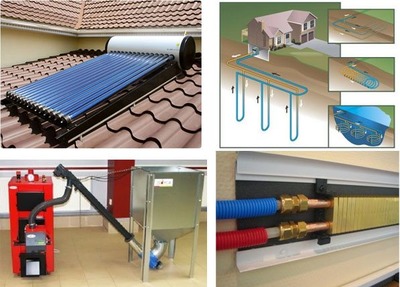
The choice of heating method for your home depends on weather in the region, building materials, from which the dwelling is built.
For heating they install solar collectors, use liquefied gas cylinders.
If the electrical network is connected to the house, but there is no gas main, the owners buy electric heaters and boilers, heat pumps.
The traditional way of heating a home is by burning wood, coal, brown coal and dung ovens.
Content
What is the best way to heat a room?
There are the following types heating for a private house.
Heating with heat pumps
The operating principle of heating devices was discovered back in 19th century physicist Kelvin, who named this unit "heat multiplier". He suggested that refrigeration machines could be used for heating. By cooling the freezer, the refrigerator heats the space around itself.
Heat pumps work on the principle refrigeration unit. The main parts of a heat pump are: control module, consisting of a control panel and boards, compressor and heat exchanger.
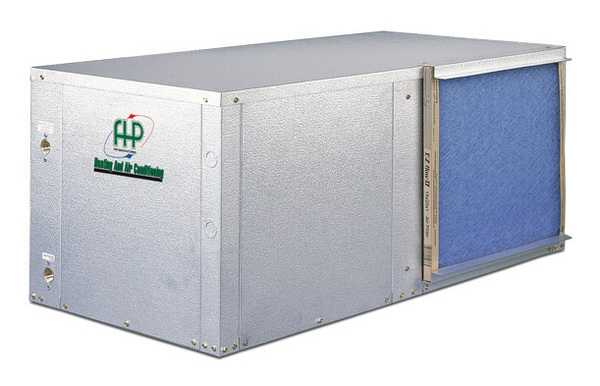
Photo 1. Heat pump model GT 048, heating capacity 16.99 kW, manufacturer — "Fhp".
A liquid circulates through the heating device's tubes (external and internal circuits), which has a low boiling point and easily turns into gas. It is called refrigerant.
The coolant flows through the external heat pipe, is heated by the air, earth, water and turns into a gaseous state. The gas then moves to compressorThere, the gaseous refrigerant is compressed, causing the temperature of the gas to rise sharply.
The heated gas passes into capacitor (second heat exchanger) and heats the coolant (water), loses temperature and becomes liquid. Then the cycle repeats.
Advantages and disadvantages
Advantages of a heat pump - energy savings and no harmful emissions. The device consumes five times less electricity than traditional electric boilers.
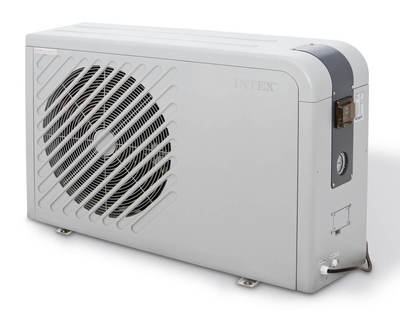
- Heat pump does not emit any substances into the environment.
- Installation of the device does not require permits or approvals with government control authorities.
- Devices cannot explode or catch fire.
- Operating parameters are adjustable remotely (via the Internet).
- The heat source can be any object or environment with a temperature above 1 °C.
The disadvantage of a heat pump is the high cost of equipment and installation. This includes the water is not heated high enough.
Boilers
Domestic heating boilers are used to heat water in heating and hot water supply systems. Boilers are single- and double-circuit.
Single-circuit devices are designed only for heating the coolant in the heating system. Double-circuit devices also heat water for showers and household needs.
Boilers differ in size, design features, and type of fuel used.
The industry produces the following types boilers:
- electrical;
- solid fuel;
- liquid fuel;
- combined;
- gas.
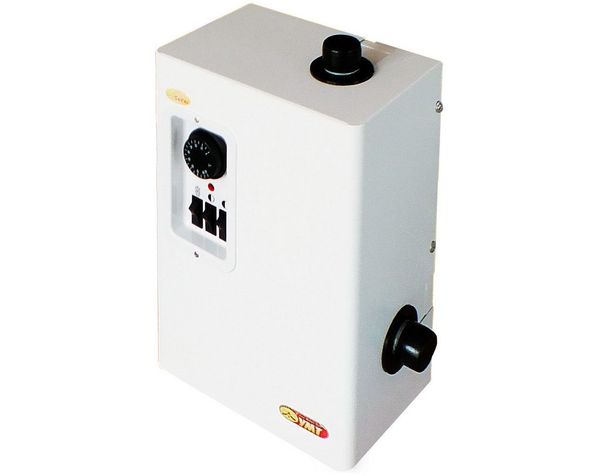
Photo 2. Electric boiler model EVPM-12, rated power - 12 kW, weight 9.4 kg, manufacturer "Sangai".
Electrical Boilers heat water with heating elements (rheostat cartridges) and electrodes. The devices are floor and wall mounted, control buttons are displayed on the front panel of the device. Heating with electric boilers is used in the "Smart Home" system.
Solid fuel boilers use as a coolant coal, firewood, any organic fuel. Combustion takes place in the combustion chamber. It has a built-in tank and metal heating pipes. Heated water circulates in the heating system, gives off heat to the home and returns to the heating point.
Liquid fuel the boilers operate on diesel fuel. In such units, a system for supplying and spraying diesel fuel is installed. Burning diesel fuel quickly heats the water in the pipes.
Reference! Many portable electric heaters are equipped with rollover sensor, which turns off the device after a fall.
Combined boilers heat water electrical elements or combustion products of solid fuels (at the owner's choice). Electric wood burning devices have a combustion chamber and built-in heating elements, which turn on when the wood burns out. Some combined devices provide for the installation of gas burners.
Pros and cons
Each type of heating boiler has its own advantages:
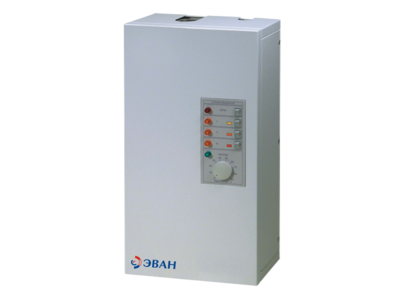
- Solid fuel units simple in operation.
- Boilers with electric heaters can be installed inside living roomsThese units do not require a chimney and do not produce carbon dioxide.
- Liquid fuel devices quickly heat the coolant to the desired temperature.
- Combination models allow you to use several types of fuel.
- Boilers heat a private house well in the coldest months of the year.
TO disadvantages boilers include:
- education scale on heating elements and electrodes;
- need periodically cool Solid fuel boiler for ash extraction.
Electrical units
Electric heating units include: fireplaces, heaters, underfloor heating systems, infrared heaters. Electric heaters work by converting electrical energy into infrared and thermal radiation, which heats the air and hard surfaces in the home.
Fireplaces
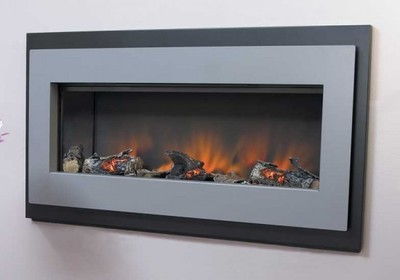
Electric fireplaces come in floor-standing, built-in and suspendedSome models are made to look like cast iron and brick fireplace stoves.
Heating devices have heating power switches, decorative lighting, and others. Lighting special effects.
The fireplace heats the room with thermal radiation from the work panel.
Advantages electric fireplaces:
- These devices are equipped with powerful heating elements and quickly warm up the room.
- An artificial fireplace creates cosiness in the house.
Flaw electric fireplaces consists of significant consumption of electricity with 24-hour use.
Electric heaters
These electrical appliances are used if the air temperature does not fall to extremely low values. The following types of electric heaters are available for sale:
- oil heaters;
- convectors;
- fan heaters.
Oil heaters are closed containers that contain liquid inside. oil and heating elements. The device body is divided into several sections and is shaped like a heating battery. A built-in timer, preventing overheating, and mode switches. The oil in the battery heats up and evenly emits thermal radiation in all directions.
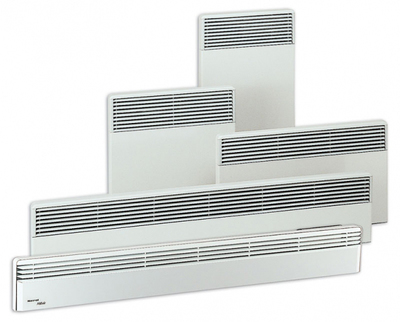
During operation, the devices create even heat, similar to steam heating batteries. The devices do not burn oxygen in the house.
The disadvantage of oil heaters is that slow warming up air due to the lack of forced convection.
Inside electric convectors Air passes through the heating elements and exits through the upper slot openings.
The advantage of electric convectors is the ability to heat rooms large area and volume. Effective heating occurs due to active air circulation.
The disadvantages of electric convectors are high energy costs when operating around the clock, and inexpensive models have a short service life.
Fan heaters draw cold air inside and almost instantly heat it from a coil or other heating element. The air is then blown out into the room. Fan heaters can be floor-standing or wall-mounted, compact or large.
The advantage of fan heaters over other devices is the creation of directed heat flow. The flow strength and temperature are regulated by turning on one or two spirals, opening and closing special curtains. In summer, the fan heater is used to cool the room.
The disadvantages of fan heaters include: high energy costs during operation. Cheap models of these devices have a short service life.
Infrared heaters
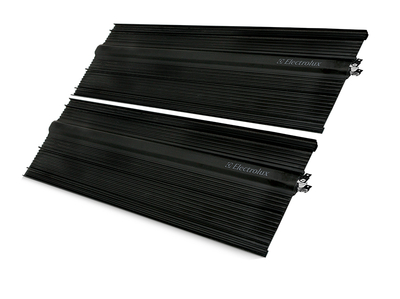
Infrared heaters selectively heat the room. They create infrared radiation, emitting radiant energy.
Radiant energy is absorbed by walls and furniture, which, in turn, heat up and give off heat to the air.
These heating appliances emit longwave, mediumwave and shortwave infrared radiation.
The advantages of infrared heaters for heating are related to the features of their operation: an air gap directly in front of the reflector It hardly heats up. Only solid surfaces are exposed to heating.
The disadvantage of infrared heaters is the high cost of the devices.
Warm floor
The "Warm Floor" system heats the room from below, heating the floor covering. For this purpose, electric cables, rods, film tapes, amorphous metal tape, heating mats are laid under the floor. The room is heated evenly, you can walk barefoot on the floor in winter.
The advantages of the “Warm Floor” system include thorough heating of not only the floor, but the entire room.
The disadvantages of the system include: high installation costs and overall complexity structures. If at least one element located under the floor fails, the heating will stop working, and the floor covering will have to be dismantled for repairs.
How to heat a private house without central gas and electricity
Exists several options heating without using gas or electricity.
Solar collectors

Solar collectors are devices for accumulation of thermal solar energy, which is carried by the visible light spectrum and infrared (near) radiation.
These devices heat up coolant (water), which is used for heating homes and hot water supply. The industry produces two types of solar collectors:
- flat (the working element-adsorber consists of metal plates);
- vacuum (working elements are tubes with a special coating from which air has been pumped out).
The principle of operation of the collector is simple: visible light and infrared radiation hit the panels installed on the roof of the house, the working elements of the devices heat up and give off heat to the heating system.
The elements of the panels that accumulate solar energy are called adsorbers. The coolant, which circulates through the tubes inside the adsorber, is heated to a temperature 50—60 °C (on hot sunny days - up to 100 °C)The coolant is water, to which is added antifreeze.
Water circulates between collector and buffer tank, from where it is supplied to the pipes, gives off heat and returns back. To turn on the system, a special regulator is used, after the panels are heated, a pump is turned on to pump water.
Advantages of solar collectors - saving costs of electricity, gas, solid fuel, diesel fuel, ensuring the autonomy of housing. This includes eco-friendliness collectors, minimal costs for their maintenance.
Disadvantages of solar collectors - high costs for purchase and installation equipment, difficulty of use in regions with short daylight hours.
Stove heating
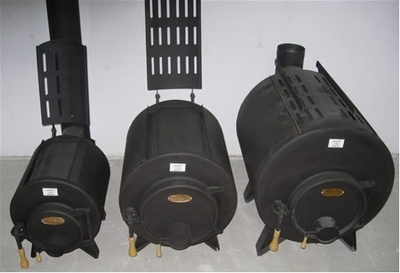
In rural areas, stoves are most often used to heat a house. There is 2 types stove heating:
- In blackWhen the stove does not have a chimney, the smoke comes out through the door and special holes in the ceiling and walls.
- In white, when smoke comes out through the chimney.
In some villages, home stoves were heated in a black way until the middle of the 19th century. This heating method is not currently used.
The operating principle of brick, metal, clay stoves is simple: from the combustion of fuel, the body of the stove heats up and gives off heat. If the firebox has a built-in water tank, then heating is carried out from pipes running along the internal contour of the house.
The advantage of stove heating is that ease of useIf there are no problems with firewood or coal in the region, then using a conventional stove will be profitable.
The disadvantage of this type of heating is the need for constant maintenance of the equipment: cleaning of the blower and chimneys, cosmetic repairs, preparation and purchase of firewood. The stove is a bulky structure that takes up a lot of space.
Heating with liquefied gas if there is no firewood
Liquefied gas (propane) is used for heating and lighting houses located far from stationary gas networks and power lines. Gas can be supplied:
- from gas cylinders;
- from underground stationary gas tank;
- from mobile gas holder, fixed to a car trailer.
The principle of operation of such heating is to supply gas from the reservoir to the house and burn it in a gas boiler to produce heat. The reservoirs are located outside the building. In addition to the gas boiler, the house is equipped with kitchen stove, gas water heater, electric gas generator.
Important! Gas explosive, therefore the equipment is installed by specialists.
Advantages of heating with liquefied gas - autonomous, silent operation of the gas boiler, long service life of the equipment. The combustion products of propane do not contain sulfur oxide, which is harmful to garden plants.
The disadvantages include: high installation costs, the need to pay for the services of professionals.
New product - "Passive House" technology
Passive house (eco house, aka energy saving house) - a residential building in which there is no need for any heating, and electricity consumption is reduced to a minimum.
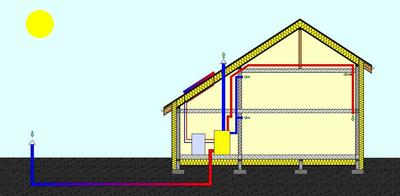
The eco-house is well insulated: there are no insulation marks in the junctions or building materials. cold bridges. The building has a shape that ensures minimal heat loss.
It is correctly zoned, correctly oriented according to the wind rose and cardinal directions. Supply and exhaust ventilation with heat extraction is used for air circulation.
An ideal eco-house is a small ecosystem in which the air is heated by the bodies of people living in it and by household appliances. For additional heating of the home, they use heat pumps and solar collectors.
The advantages of an energy-saving building are: savings on payment for energy supplies and the absence of environmental pollution.
There are no known disadvantages to such housing, as eco-houses are not yet available. very little was built.
Useful video
Check out the video that talks about the different options for heating a private home.
Which option to choose?
Modern heating involves the use of not only traditional heating devices, but also new, environmentally friendly systems. Correctly selected heating devices and heating methods provide a comfortable temperature in the house throughout the year. Selecting a method heating of the home depends on preferences owners and their financial opportunities.










Comments
I first learned about heat pumps from this article. I wonder how it all works. And an eco-house is what I've always dreamed of.